Duivekater is a traditional festive bread that originates in Amsterdam and surroundings and is now still popular in the Zaanstreek where I grew up (and still live), just north of Amsterdam. There are sources as far back as the 16th century describing this bread, and it is depicted on paintings like this one from Dutch master Jan Steen from 1658 (it is the oblong bread leaning against the wall on the left-hand side of the baker).
Duivekater, also written as deuvekater, does not refer to doves (duif) or cats (kater), but to “devil’s cake”. The name originates from the old tradition to sacrifice animals to the gods at Easter, which was later replaced by sacrificing just a limb of an animal, and ultimately only a bread shaped as a limb.
Duivekater is mostly eaten at Easter, but also at Christmas and Whitsuntide. It is a lightly sweetened luxury white bread, enriched with milk and butter, and aromatized with lemon zest. It is more compact than brioche, with only tiny air bubbles, and it is the lemon zest that provides the characteristic aroma. I grew up eating this on the holidays, and never realized it was such a local specialty (as duivekater is hardly known in other parts of the Netherlands).
You eat slices of duivekater with some (unsalted) butter, and the flavor improves after a few days. It keeps for about a week. Here is how to make your own.
Ingredients
For 1 bread of about 800 grams (1.8 lb)
500 grams (3 1/3 cups) flour
200 ml (5/6 cup) milk, at room temperature
7 grams (2 1/4 tsp) instant yeast (or 20 grams of fresh yeast)
1/4 tsp salt
50 grams (3 1/4 Tbsp) butter, melted and cooled
100 grams (1/2 cup) caster sugar
grated zest of a small lemon
1 egg, lightly beaten
Instructions
Mix about half of the flour with the instant yeast (or crumble the fresh yeast into the milk and stir to dissolve).
Put the flour in a stand mixer fitted with the paddle attachment and turn on the machine. Add the milk while the machine is running.
Keep going until the dough comes together.
The dough will be very sticky. Cover with a tea towel and…
…allow to rise for 30 minutes.
Add the remaining flour, sugar, lemon zest, salt, melted butter, and about half of the beaten egg (reserving the remainder).
Mix with the paddle attachment until the dough comes together.
Switch over to the dough hook.
Knead on low speed until the dough is smooth.
Shape the dough into an oblong shape and put it on a baking sheet lined with oven paper.
Make deep incisions into both ends…
…and roll them up as shown.
Cover with a tea towel and allow to rise for 30 minutes.
After it has risen, preheat the oven to 200C/400F (not fan forced).
…brush with the reserved egg…
…and carve a decoration into the top. You can make this as elaborate as you like, and can even use small pieces of dough to add further decorations.
Bake for 30 minutes at 200C/400F (not fan forced), then allow the bread to cool completely on a rack before storing it in a plastic bag.
Flashback
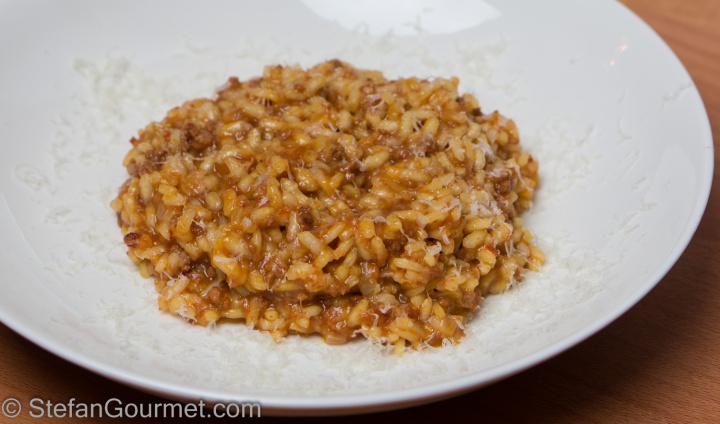
Have you ever heard of risotto alla bolognese? It’s not a traditional combination, but it it delicious and the texture of the risotto and the ragù work very well together. I When I make ragù alla bolognese, I always make a big batch and freeze most of it for later use. If you already have the ragù and some nice homemade stock, this recipe is relatively quick and easy to prepare.




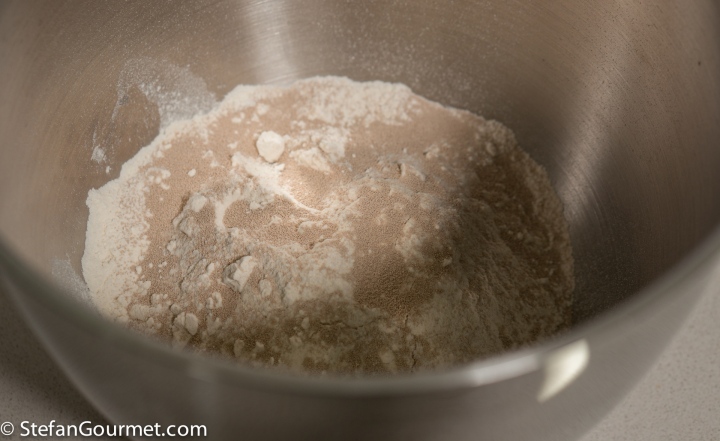



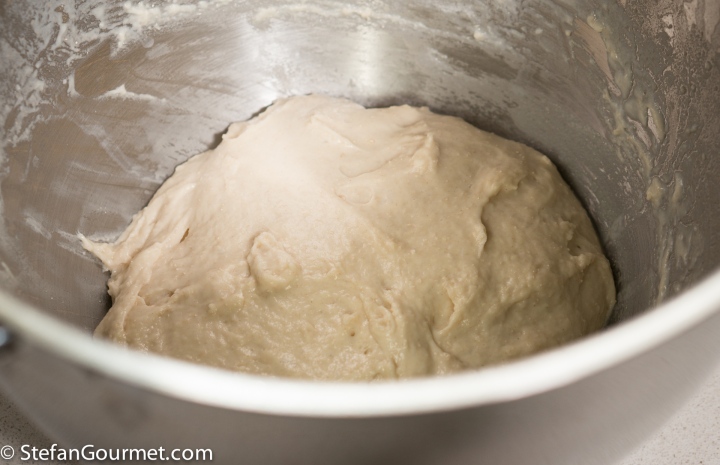







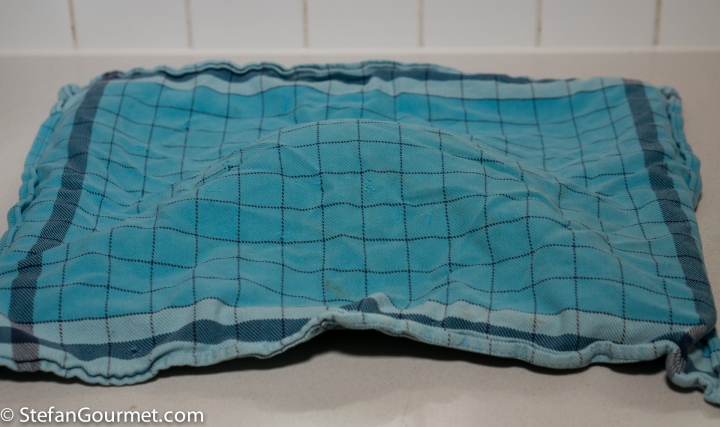


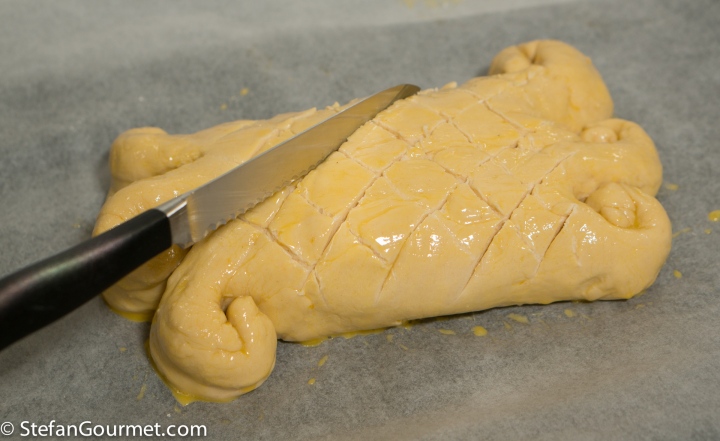


Nice 🙂 I wish you a very nice easter. A little kiss from an Italian friend
LikeLiked by 1 person
Grazie, Bea, e Buona Pasqua!
LikeLiked by 1 person
Old Stuff – Good Stuff 🙂
Great !
Cheers !
LikeLiked by 1 person
Just gorgeous. I love the different shapes and designs from various cultures and cuisines!
LikeLiked by 1 person
That’s interesting! There is a traditional Polish bread that is quite similar in terms of its ingredients (but not its shape).
LikeLiked by 1 person
Oh how pretty ! bellissimo. And can imagine, too, how lovely it tastes … I adore butter so there you go. What could be nicer than festive bread and butter ! Buon compleanno to you and Kees!
LikeLiked by 1 person
Un pane! Grazie, bellissimo
LikeLiked by 1 person
I just love traditional recipes, especially for local specialties not widely know outside their area of origin.
LikeLiked by 1 person
“known”, dammit.
LikeLiked by 1 person
You had me at bread…
LikeLiked by 1 person
Hi, thanks for sharing, I’m making duivekater right now. 🙂 I just wanted to chime in to say that in Sweden (and the other Scandinavian countries) we have “lussekatter”, a pastry traditionally made for St. Lucy’s day (December 13th), which allegedly developed from duivekater. They are saffron buns shaped into fancy shapes. Thought that could be interesting to know.
LikeLiked by 1 person
Thanks. That is interesting.
LikeLike